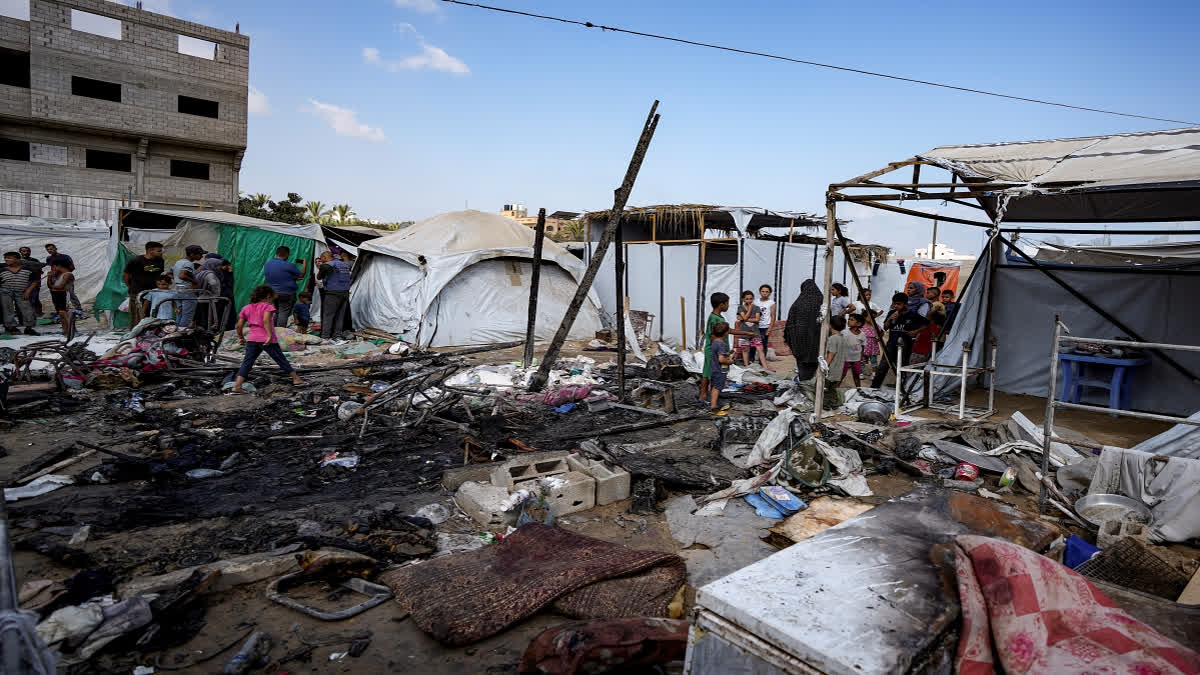Following the Hezbollah rocket strike of 27 July, on a Druze town of Majdal Shams in the Golan Heights killing 12 children, in the last week of July, in Beirut's southern suburbs, Israel targeted a top Hezbollah commander Fouad Shukr who threatened with the counterattacks across Lebanon's southern border in parallel with the Gaza war; and the chairman of Hamas' Political Bureau, Ismail Haniyeh, while attending the inauguration of the Iranian President.
In another serious blow to Iran and its axis of resistance which encompasses militant groups in Palestine, Iraq, Lebanon, Yemen and Syria, Israel has declared that it killed top Hamas military commander Mohammed Deif, the planner of the Al-Aqsa Flood Operation (October 7 attacks) on 13 July airstrike.
Enmity between Israel and Iran
Subsequent to these targeted killings, the 40-year-old enmity between Israel and Iran and its axis of resistance had entered a new phase. At present, how the death of a key leader will impact Hamas? How Iran and other proxy groups are going to trigger the threats of retaliation? How Israel and the United States (US) are heading to respond to the threat in future are agonising the world.
Ever since Haniyeh became Chairman of Hamas’ Political Bureau in 2017, he has been a strategic planner, a key leader in navigating the rising power of Hamas regionally, globally and most significantly he motivated support for Hamas after October 7 by reaching out to Turkey, China and Russia. He also played a considerable role in the negotiations for the release of hostages taken by Hamas.
Now, his death gives a great blow to Hamas in both Gaza and the Middle East. In fact, the killing of Haniyeh is not supposed to upset the ideological or operational capabilities of Hamas but it can create a momentary pause. Hamas' leadership has seen the killing of Ahmed Yassin and Abdel Aziz-al-Rantisi, the founders of the Hamas movement in 2004 but Hamas was not rooted out, instead the group grew even stronger. International geopolitical strategists believe that Hamas will continue to remain as a movement under the leadership of Yanya Sinwar, who had fully transformed Hamas into the 24 battalions of fighters that launched the October 7 attacks on Israel.
Iran prefers to prolong the proxy war
Earlier, Iran does not want to undertake a direct war and prefers to prolong the proxy war with the assistance of the axis of resistance, but the killing of Haniyeh deep in its territory is an embarrassment to Iranian security services and subsequently calls for a strident reply to convince the Iranians and people of the Arab world.
However, in the immediate future, if it should become directly involved, the conflict would be twisting into a regional war. Iran has already surrounded Israel with missiles and drones through its "unity of the arenas" strategy, which involves joint military operations by axis of resistance members against Israel. If Iran decides to synchronise simultaneous bombings of Israel by its proxies be possibly very destructive and bring the US into the battle on the Israeli side the one which Israel wants. Moreover, after the Israel-Hamas war, the economy of Iran is weak due to the decline of Rial against the US dollar. Consequently, it is not in Iran's interest to get complicated by directly engaging in the war, but, its strategy may be instead of the full-scale war, it covets to continue the conflict below the brink of regional war to evade the direct involvement of the US.
Iran and its backed Axis of Resistance including Hamas, Lebanon's Hezbollah, Yemen's Houthis, Kataib Hezbollah, the Islamic Resistance in Iraq, the 47th Popular Mobilization Unit brigade (PMU) of Shi’ites in Iraq and various Shi’ite armed groups in Iraq and Syria may opt for other options like attacks on settlements and military bases in Israel's Otef Aza region by Hamas; U.S. military bases Al-Tanf, Al-Rukban, and Al-Malikiya in eastern Syria near the border with Iraq by the Islamic Resistance in Iraq; Israeli settlements in the Golan Heights by armed groups of Syria.
Kataib Hezbollah could attack Iran
